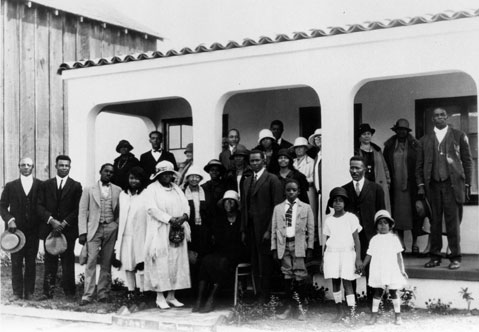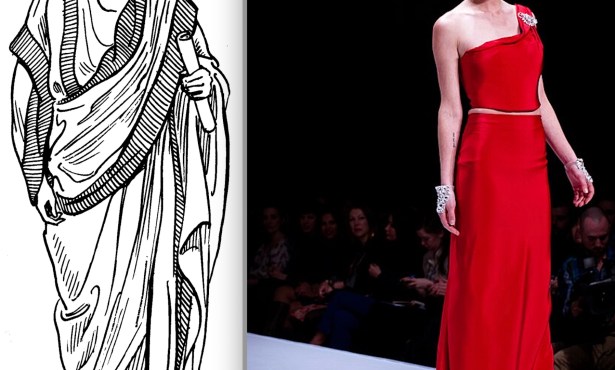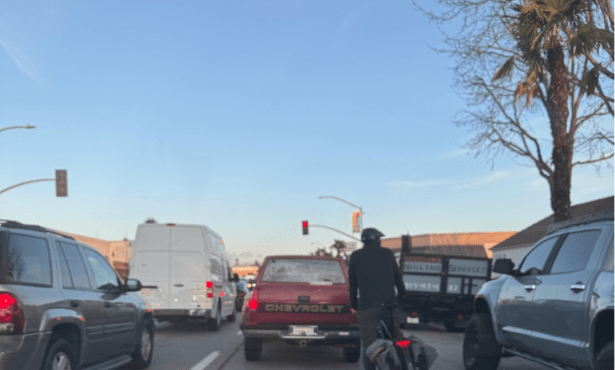The History of Black Lives in Santa Barbara
Time to Celebrate El Presidio's Black History

Now is the time to get back to the real history of Santa Barbara’s settlement without biased political alterations and lack of acknowledgement. In a letter published soon after the Black Lives Matter protests began in May, my husband, Dr. Jarrell Jackman, executive director emeritus of the Trust for Historic Preservation, probably surprised many with the actual facts of Black settlement here. Among the longtime supporters of the Trust was Edward A. Williams II, an African-American Life Honorary Member of the Trust and a member of Knights of Columbus.
It is time to refocus our attention on sites that mark Black history, especially this very first one. Why not celebrate that as part of next year’s Juneteenth events? As the very first Spanish census of the El Presidio State Park indicates, most persons founding our city were black, brown, or a mix of both.
In 1782, the Spanish ruled multiple presidios for settlement. They recruited soldiers and their families from escaped slaves, promising freedom for them and their children. This was followed by Spanish King Ferdinand VII proclaiming there was to be no more slavery in any settlement nor any human trafficking in 1813. It was hard to enforce but ahead of its time. The year 1782 saw people of color — the Chumash — meeting people of color, welcoming them to explore common needs and ways to live and work in harmony.
From 1782 to the early 19th century, Black people lived, worked, and built this town among the Chumash, learning the area’s geographic issues. We still celebrate many of the descendants of those first people on Founding Day, April 21, at the Presidio; we have for many decades. As an actual site of Black history, let’s not bury it under the layers of modern interests and preoccupations with “other periods of history.” Also, one can visit the tile honoring the young son of Chief Yanonali buried in the Chapel, evidence of nonwhite burials at this site during those first two decades.
Fast forward to work on the Presidio in the 1960s under Pearl Chase’s influence, after the Earthquake of 1925. This was a project intended to restore and preserve the early history (a largely Mexican and Black history) of our founding and its people we still call descendants. Genealogical panels are on display at the Presidio, and the original Black soldiers and their families are listed. As one fourth-grader exclaimed in a history visit, “Look! These people were named after the streets!” It was quickly pointed out that it was the other way around, and he remained interested in learning more about this heritage.
The late California Presidio descendant and singer Elizabeth Hvolboll used to state with pride that she had Black origins and was proud to mention them before singing and telling the history of the early California music she interpreted. Diversity was part of all programs during Jerry’s tenure as CEO of the Santa Barbara Trust. The current King of Spain, when he was still Prince Felipe, came here twice to praise preservation of this history — in 1995 and 2013.
Why is this history not widely known? Local author and UCSB Professor Phillip Powell, in his work Tree of Hate, asserted in 1971: “It is the greatest misfortune that the myths of Hispanophobia … bear the stamp of intellectual respectability.” Powell asserted that it was difficult to gain a “hearing” when minds were made up and made ugly and false, stereotypically anti-Spanish statements. Powell’s point: ironically, a real systematic hatred movement called the Black Legend sought to destroy the truth of Spanish history here and in other places globally as a smear campaign. Ironic that this movement was simply anti-Spanish and took actual Black history and lives with it. Finally, Powell, concerned about real agendas asserted, wrote, “There is nothing in Spanish History to prove that these Spaniards (settlers) were more cruel, more greedy, or more depraved than other peoples.”
El Presidio State Park is one of few remaining sites in town that reveals a real history of Black settlement and the celebration of racially mixed cultures and individual families. That is what we hope to celebrate at Fiesta — our Hispanic multicultural heritage, acknowledging a value we still hold dear.
In a book written by Dr. Jackman in 1988, Santa Barbara Historical Themes and Images, there are three pictures of note in that work, which was published by the NY Times. One shows Pearl Chase in the 1920s with a large group of very well-dressed Black people. She was continually active in the housing movement in S.B., as well historic preservation and various other social causes.
Sadly, in 1923, national political currents of fear and hateful politics were manifested in a newspaper photo showing a number of local KKK participants in an event in Santa Barbara. No one knows how many Blacks left for Los Angeles and other places. But Black traditions still exist here, according to Rain Longo, who once portrayed St. Barbara during Fiesta. A Black wedding tradition is to “jump the broom,” Longo said, who coordinates weddings at the Presidio. It was a symbol of the freedom to marry whomever a person wanted, said to originally be a Welsh tradition that migrated to Western Africa, and ended up on plantations in the American South. The idea was to sweep away evil with the spirit of love. This practice has been used in some weddings at the Presidio Chapel and around town by all races.
Finally, we see a third photo of two proud members of the California Conservation Core interns, Ralph Ross, who was Hispanic, and volunteer Marlon Moland, who was Black, sitting with pride in front of a completed chapel they helped restore.
Let’s remember and celebrate this Black History site and preserve it in memory on Juneteenth, naming these founders by name and celebrating their legacy.



